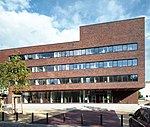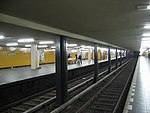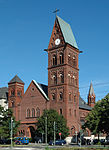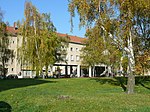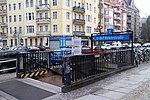Sugar Museum (Berlin)
1904 establishments in GermanyDefunct museums in GermanyFood museums in GermanyMuseums established in 1904Museums in Berlin ... and 1 more
Sugar museums

The Sugar Museum was a museum that operated from 1904 until 2012 in Berlin with exhibits dedicated to the history and technology of sugar. At its closure as an independent museum in 2012, it was the oldest such museum in the world, and was housed in the Institut für Lebensmitteltechnologie (Institute of Food Technology) in Wedding, Mitte. It reopened in the form of a modernized exhibit at the German Museum of Technology in Kreuzberg in November 2015.
Excerpt from the Wikipedia article Sugar Museum (Berlin) (License: CC BY-SA 3.0, Authors, Images).Sugar Museum (Berlin)
Amrumer Straße, Berlin Wedding
Geographical coordinates (GPS) Address Nearby Places Show on map
Geographical coordinates (GPS)
| Latitude | Longitude |
|---|---|
| N 52.545555555556 ° | E 13.345277777778 ° |
Address
Amrumer Straße
13353 Berlin, Wedding
Germany
Open on Google Maps
